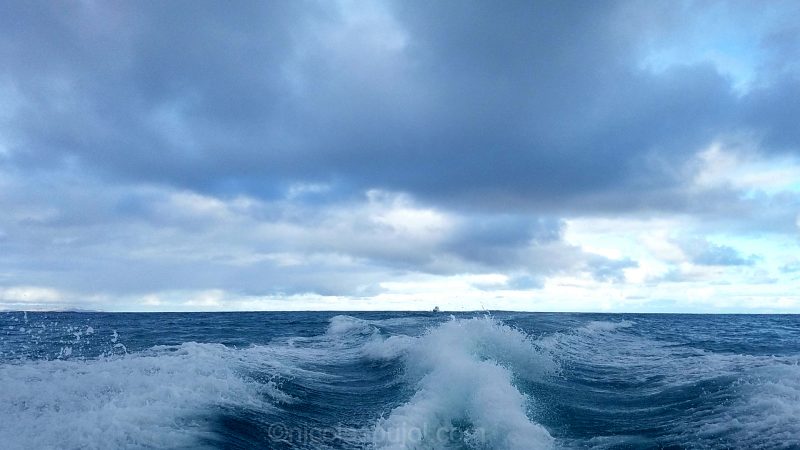
Movement is part of life: we spend energy. We can experience one location, then another. All of life is in constant movement. Our body has motion sensors: the eyes see what’s happening, and inside our ears, sensors pick up the motion itself, the change in gravitational force. When we walk, ride, or even are the driver of a vehicle, we initiate the motion. Therefore, the brain expects the movements that occur, and there is no dissonance. However, when someone else drives the vehicle, we become passive passengers and a difference happens between what the brain expects and how movements occur.
I was sick as a kid when we drove from the city to villages in the mountains. We’d get in a car, which smelled like gas, especially if we were driving behind another vehicle, and at 5 years of age, you’re barely tall enough to see the road in front. This, plus other things, made it a tough time. As an adult I took the boat a few times and started noticing that some basic behaviors made motion sickness much worse, or much better. We’re finishing a week in the Galapagos islands, which included up to 6 hours of rocky boat rides, bus rides, and for the most part the trip I did not feel sick.
Here are a few simple habits you can develop to reduce or completely eliminate motion sickness:
Be fully digested by the time you start a trip
When we eat something that contains unusual or indigestible foods, our body and immune system have a mechanism to eliminate the foreign substances by vomiting. Vomiting is a protective behavior that turns on automatically when normal means of absorption fail to work. Getting into a car, a bus or a boat just after a meal exposes you to false positives. The brain thinks the mis-perception from motion comes from food poisoning, which might trigger the defense mechanism of throwing up. If you are fully digested, however, you will have “clean blood” which will signal to the brain that what’s in your stomach has nothing to do with the feeling of motion. Being fully digested for a mid-size meal takes about 3 hours, and for a big meal, 6 hours.
Avoid alcohol and other things that upset the stomach
Guess what a hangover does? It puts so much alcohol and byproducts into the blood stream that the body wants to eliminate it by vomiting. The same goes for eating too many desserts, and too much food in general. I find alcohol one of the top triggers of motion sickness. We had liquors in Costa Rica a few years back, with a boat ride the next morning. It was not a fun trip!
Avoid fumes from gas engines
Smells from gas engines represent another trigger of motion sickness and vomiting. We don’t even need to move to feel sick when close to a car or boat that emits stinky fumes, so imagine while being shaken for several hours. If you are on the road, ask the driver to avoid being just behind other vehicles and keep some distance to allow fresh air to come into your path. Even better when feasible, pass these vehicles.
Look far ahead
One of the first pieces of advices one is given when getting on a boat, is to find a point of horizon far away, and keep sight on this horizon. If vision plays a role, we can avoid motion sickness by focusing on still horizons and anchors, avoiding the choppier and closer objects as they bounces and shift up and down, and left to right.
Pros and cons of motion sickness pills
There are pills nowadays, available to help counteract motion sickness. I tried one – just to try once, and it was one with a possible side effect of drowsiness (Dramamine). Many medications note they may make you drowsy, but this one just turned me into a potato for the rest of the day. I felt very, very tired, and skipped the full day of snorkeling, not even getting the water, and sleeping most of the afternoon on the boat. I guess it had some effect in preventing motion sickness, but the side effects were so strong that I have no interest in taking another one, except for last resort kind of situations.
One more thing: the boat top or bottom back
If you are on a mid-size boat with an accessible top, you can try and make your ride from the top. You will see better, and possibly will also get much more rocked. Another good spot on boats is the back of it, on the main bottom floor. This location tends to experience the lowest amount of turbulences, being close to the engine. As the boat moves forward, the front lifts and bounces, while the back tends to keep contact with water.
Good luck on your travels!

Leave a Reply